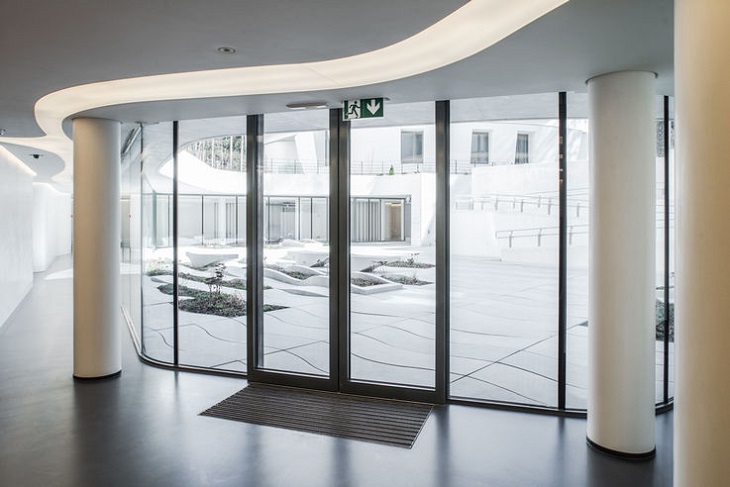Automatic metal doors are now a common element in industrial and commercial buildings in the current world of architecture and construction. These doors are efficient, safe, and convenient, but it’s important to put safety first when choosing and installing them. Understanding the essential safety features to look for can help you make informed decisions and create safer environments for both visitors and residents.

Safety Sensors and Detectors
The use of sensors and detectors is one of the main safety features of automatic metal doors. These gadgets are designed to identify things, persons, or obstructions in the path of the doorway. The door’s automatic closing system stops or reverses when it detects an obstruction, preventing collisions and injuries. Advanced sensors ensure accurate detection in a range of environmental conditions by using technologies like radar, ultrasonic, and infrared.
Emergency Stop Button
An emergency stop button or switch is an essential safety element. In case of an emergency, such as a malfunction, power failure, or safety danger, this enables quick manual intervention to stop the door’s movement. The button should be prominently located and easily accessible to authorized personnel for quick response and action.
Safety Edges and Bottom Rails
Safety edges and bottom rails should be included on automatic metal doors to avoid crushing or trapping injuries. These parts are made of pressure-sensitive materials that respond to any significant force applied to them, causing the door to stop or reverse. Properly installed safety edges and bottom rails create a protective barrier along the door’s edges, minimizing the risk of accidents during operation.
Battery Backup System
Automatic metal doors have the ability to continue operating in case of a power failure because of a reliable battery backup system. This feature is especially important for high-traffic areas and emergency exits, where continuous access is necessary for security and safety reasons. During power failures, door functionality can be maintained by a strong battery backup system, allowing for orderly evacuation or entry procedures.
Remote Monitoring and Control
Remoting monitoring and control features are common in modern automatic metal doors. This feature enables authorized personnel to monitor door status, performance metrics, and safety alerts remotely. In case of any abnormalities or safety concerns, immediate actions can be taken, such as initiating maintenance checks, adjusting settings, activating emergency protocols, and enhancing overall safety management.
Fire Safety Compliance
When selecting automatic metal doors, make sure that they comply with relevant fire safety standards and regulations. Fire-rated doors with integrated fire detection and suppression features are important for protecting occupants and limiting fire spread in case of emergencies. These doors should automatically close in an emergency or response to a fire, enhancing building security and evacuation protocols.
Conclusion
The fabricacion de puertas metalicas (manufacturing of metal doors) should prioritize the above-mentioned safety features. By incorporating these features into automatic metal doors, you can create secure and efficient access solutions while reducing potential risks and ensuring a safer environment for everyone.
Read More Here:
Key Steps Involved in Manufacturing Metal Doors
What Materials are Used in the Manufacturing Process of Metal Doors
